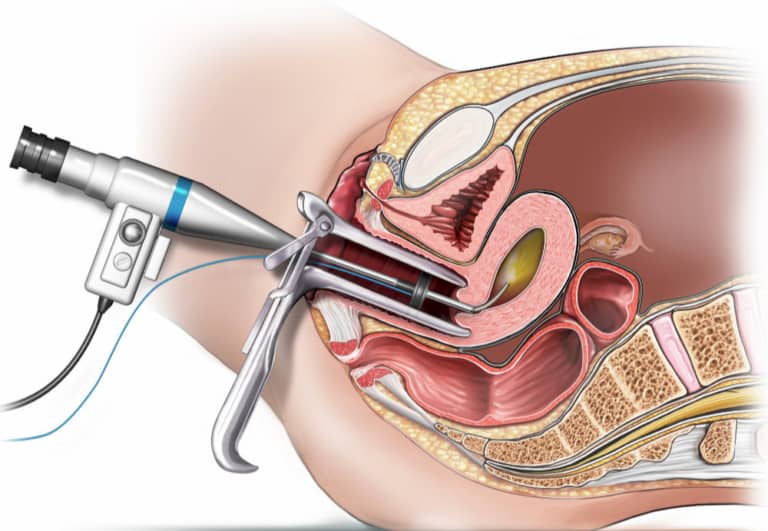What is a Hysteroscopy?
Hysteroscopy is a procedure that allows the examination of the uterine cavity. The procedure is performed by the hysteroscope, which is a narrow telescope with light and a camera at its end. The images are broadcast to a high resolution screen. The hysteroscope is inserted into the uterine cavity through the vagina and uterine cervix, without the need for any incisions. The procedure can be diagnostic or surgical.

What are the reasons for doing hysteroscopy?
- As part of symptom detection – such as increased bleeding, abnormal bleeding, postmenopausal bleeding, pelvic pain, recurrent miscarriages or infertility.
- Diagnosis of conditions – fibroids, polyps.
- Treatment of various conditions – excision of fibroids or polyps, removal of intrauterine device, resection of uterine septum, separation of intrauterine adhesions, endometrial ablation, removal of residue postpartum or post abortion.
Hysteroscopy is a minor operation performed as day procedure, and can be performed under general anesthesia or while you are awake, depending on the type of the procedure and your wish.
Recovery & what to expect after a hysteroscopy
Most women will feel well after the procedure. Some women will experience contractions of the uterus-like menstrual cramps and mild bleeding. You can rest for a few days or go back to your routine immediately, depending on the type of procedure you had and your recovery.
It is recommended to avoid intercourse for at least a week following the procedure, or until the bleeding stops, to reduce the risk of infection.
What are the possible complications of the procedure?
Hysteroscopy is considered safe. However, it is a surgical procedure and is therefore not completely uncomplicated. Rare but possible complications include: perforation of the uterine wall, cervical injury, bleeding and infection.
Dr. Amir has extensive experience in hysteroscopic, diagnostic and surgical procedures.
FAQs
Can a hysteroscopy detect endometriosis?
No, hysteroscopy cannot detect endometriosis as during hysteroscopy only the uterine cavity is seen. Endometriosis is a condition affecting the tissue/organs externally to the uterus such as the ovaries, tubes, the pelvic inner skin, bladder and bowel. Some times it is possible to detect Adenomyosis which is a similar but different condition to endometriosis, but not always.
Can I have a hysteroscopy if I am bleeding or during the period?
If it is not during the heavy days of the period, yes, the procedure can be done. It cannot be done if you are bleeding heavily.
